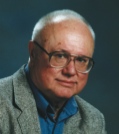
A moving experience: Using motion requires precision-quick control
June 16, 2009
By
Dick Morley
 This issue is dedicated to my friend "motion." The concept of motion has been with me since the day of my birth. The word is derived from the latin word "motio" or "to move." Together with distance, they define work. Another cousin of motion is momentum, the quantity of motion. Momentum (mass and velocity) is conserved in closed systems. Velocity is the speed of something in a specific direction. The mathematical derivatives of velocity are acceleration and jerk, respectively.
This issue is dedicated to my friend "motion." The concept of motion has been with me since the day of my birth. The word is derived from the latin word "motio" or "to move." Together with distance, they define work. Another cousin of motion is momentum, the quantity of motion. Momentum (mass and velocity) is conserved in closed systems. Velocity is the speed of something in a specific direction. The mathematical derivatives of velocity are acceleration and jerk, respectively.
In manufacturing, we need to control all factors of motion, including distance and dimensional control. We need to know the coordinate system of robots, CNC and packaging. In my distorted world of physics, the coordinate system of the moon is multidimensional, much like a CNC machine. Expanding the dimensional view from three to five (x, y, z, gravity and time) allows us to think of the moon as rolling down the groove described by these five variables. Energy is not lost (almost) in the moon orbit.
Energy: motors and motion are large users of energy. Most motors do not use the power they burn to do work. Motors now are designed to handle a high starting load and then run inefficiently at speed. Engineers can help this issue with automatic transmissions and power factor correction. This increase in drive complexity will substantially lower our industrial use of electricity. And we can paint our motion control systems green, with a daisy.
Motion, as we use it, requires precision-quick control. In the mid ’60s, a power train company hired us to do an automotive version of the anti-skid systems used on airplanes. The early design was simple. As long as the brake sensors indicated a reasonable speed correlation on all wheels, don’t do anything. If any wheel is slowing down, dump the hydraulic pressure. The throbbing of the brake pedal is the result of this simplified algorithm. Today, the Detroit engineers use wheel sensing to help stabilize the vehicle and keep it in the envelope of safe performance.
We have here on the farm a Case 580-C backhoe with all the attachments. Over coffee, we considered running the hoe over the Internet. We were a using dial-up connection to the farm. How can we reliably and accurately control this monster with the snail mail speed of the then-existing bandwidth? After lots of coffee, we elected to use modeling and drive the hoe from a local model, updated from the Internet. The Case backhoe was autonomous with connection to the low bandwidth phone system. It would drift from the desired position over time, with corrections using occasional updates from Houston. Both ends of the link were being controlled and run locally with updates between sites. We did not trust the hoe to move on its wheels, but only to dig. We did not have the confidence or the money to do anything else.
Another story. I visited Yaskawa Electric in the early 1970s. They were Modicon’s earliest Japanese user of the PLC. We drank lots of tea and dedicated ourselves to harmony. Yaskawa builds motion devices such as Motoman robots. While in Japan, we took a company-wide tour of the manufacturing and research facilities. Big motors (three meters in diameter), CNC controls and linear drives. In the research labs, we were shown nanomotors. The display I remember best was the cilia drives that some microscopic cells use for motion. I looked through a microscope at the waving cilia and the resulting motion through the petri fluids. "Mr. Morley," my host told me, "the cilia are not waving. They are rotating as does a propeller."
"What," say I? Taking me by the arm to another microscope, I saw tethered cilia rotating the body of the cell and I believed. And this was circa 1973. They were working on the mechanism of this most efficient nanomotor designed by Darwin.
As I write this column and observe the long history of motion and control, I cannot help but think of the statement "think outside the box." Maybe we have the box idea backwards. Imagine a scattering of boxes in an open field. Littered around these boxes are new ideas. In the boxes are human cultures and civilizations. We live in one of these boxes. Every once in a while, an Isaac Newton strolls by and tosses in his book Principia. With the book Principia, we could understand and control gravity. In the box are the rest of us. After a generation or two for acceptance, we use these innovations to improve our understanding and use of our surroundings. The ratio of the field people to box people is maybe 1/100. We, in the box, are the important ones. The field people toss in the doggy treats. We can live without the treats, but they are SO tasty. Eat well.
Dick Morley is the inventor of the PLC, an author, speaker, automation industry maverick and a self-proclaimed ubergeek. E-mail him at morley@barn.org.
Advertisement
- Christening the controller: What you don’t know about the birth of the PLC
- Safeguarding machinery protects workers – but only if you do it right